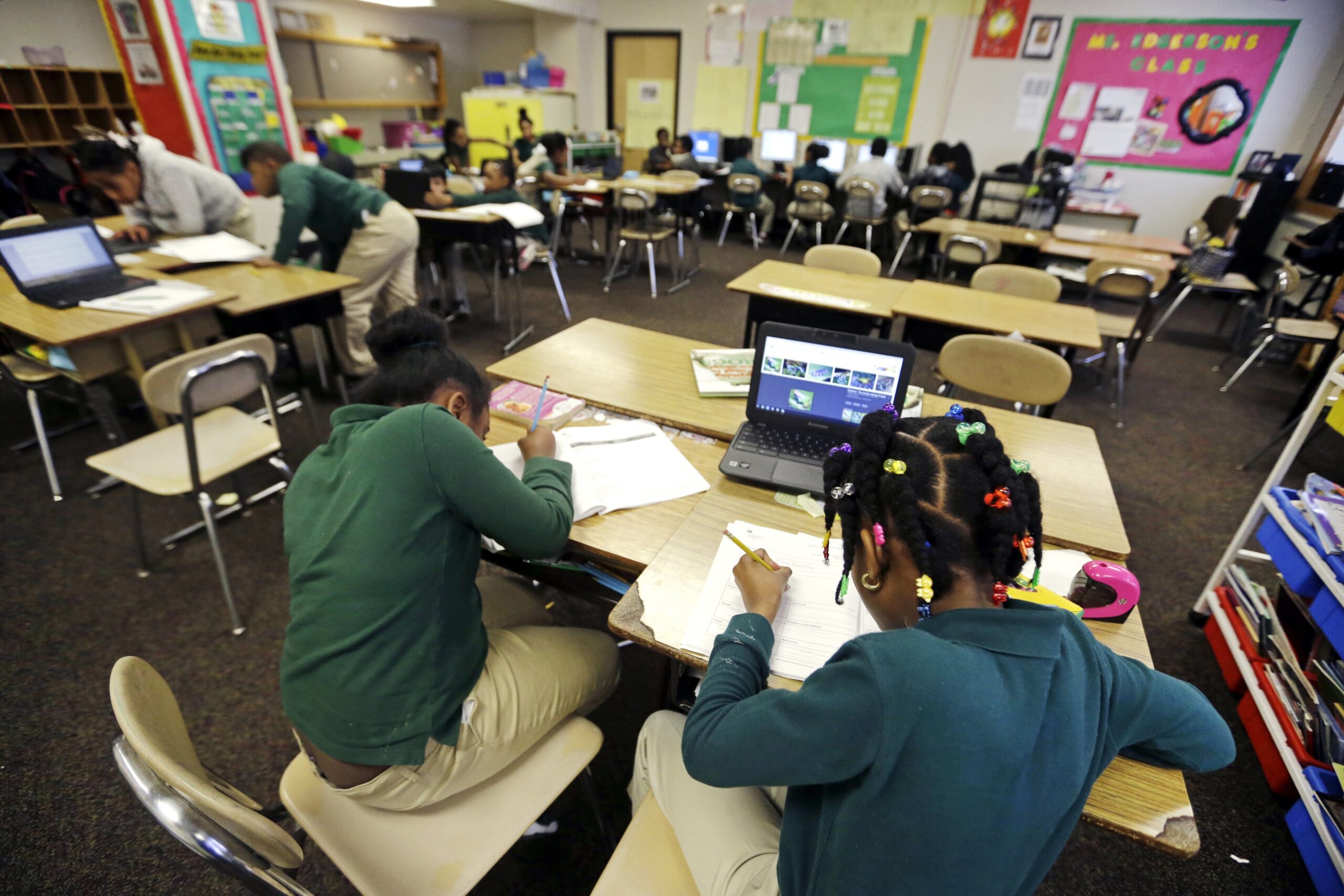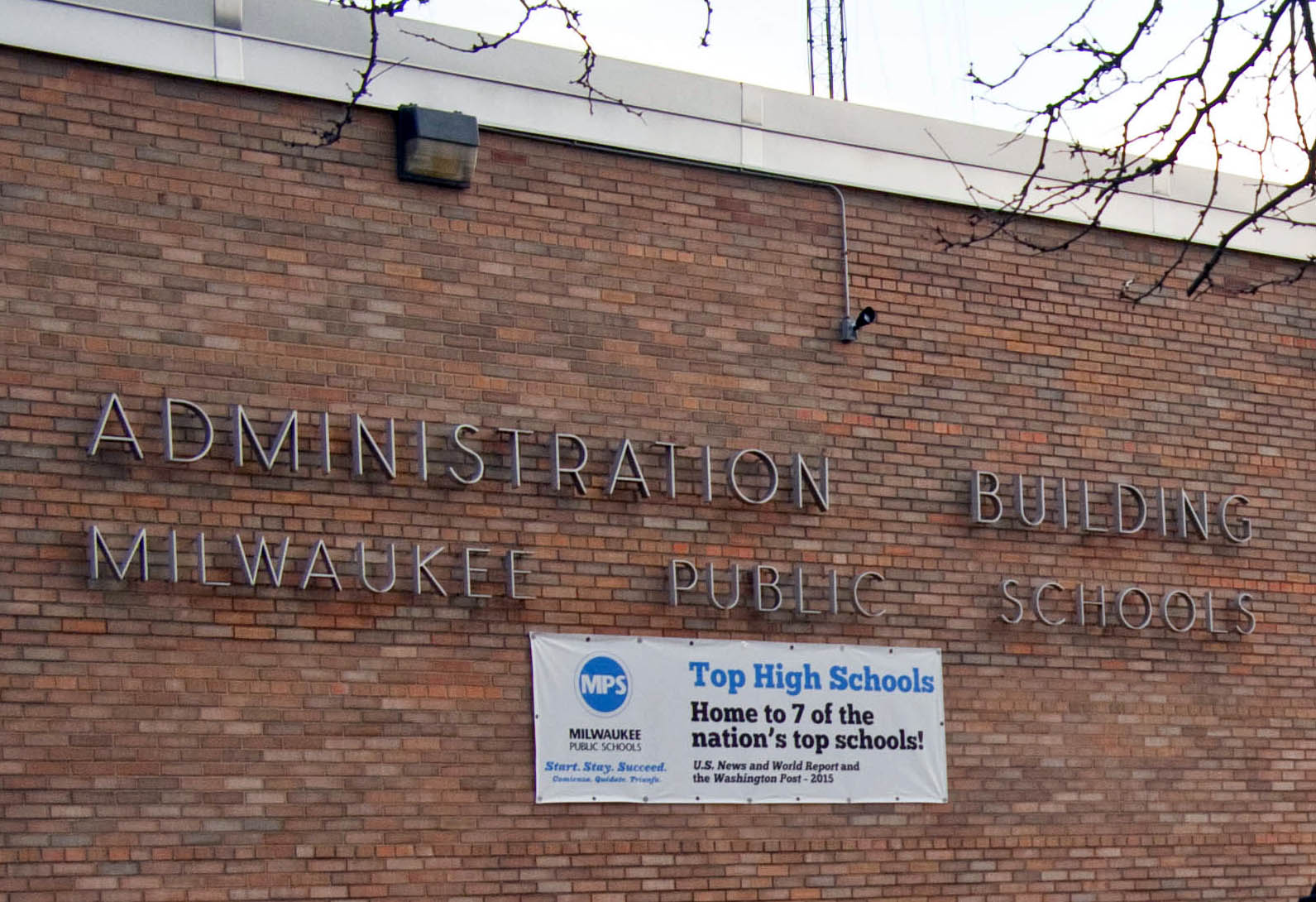The Wisconsin Department of Public Instruction released its report card on Tuesday for all 422 school districts, more than 95 percent of which met or exceeded expectations. That’s on par with last year when 91 percent of districts met or exceeded expectations. Yet, the department cautioned that many schools saw significant swings in their performance scores.
Schools are measured on student achievement, growth, college readiness and closing gaps between students of different backgrounds. The scores of 162 schools and 24 districts were flagged because of major changes in their growth scores and overall ratings. Department of Public Instruction Spokesman Tom McCarthy said it’s unclear why their scores changed so much from the previous year.
“It’s something on the policy input side. It could be how we’re using essentially what is a hyper-weighting of poverty to look at growth,” he said. “It could be the model itself. It could be what we’re really doing is injecting too much change at once.”
News with a little more humanity
WPR’s “Wisconsin Today” newsletter keeps you connected to the state you love without feeling overwhelmed. No paywall. No agenda. No corporate filter.
Lawmakers made a number of changes in the 2015-2017 budget to how schools are evaluated. The new Forward Exam format evaluates performance using a value-added calculation to measure student growth for the report cards. Schools are gauged on a sliding scale between student growth and achievement, which is based on the number of low-income students, according to McCarthy.
“In other words, if you had more students who were economically disadvantaged, we weight your growth scores higher,” he said. “If you had fewer students, we weight your achievement.”
The schools that witnessed significant changes saw their overall ratings and growth scores increase by 10 or more points — about twice the average 5.8 point change expected since transitioning to the Forward Exam. Even so, McCarthy said the report card is still a meaningful way to gauge school performance.
“We’re trying to communicate that to policy makers and say look, ‘These changes that you made, while well-intentioned, seem to be causing too much volatility to the system,’” McCarthy said. “The original intent of the report card system was to provide information to schools and districts that would actually allow them to make good decisions on how they’re providing education for their kids.”
McCarthy argued it’s difficult for schools to determine what may be the cause when scores represent significant variations from year to year. He said DPI wants to work with policy makers on monitoring what issues may exist with gauging school performance.
Despite growing pains, Wisconsin’s report card provides a more comprehensive assessment than most states that only gauge school performance on student achievement, according to Ken Wong, professor of education policy at Brown University.
“The growth measure is very helpful and not all the states are doing it right now, but because of the ESSA (Every Student Succeeds Act) legislation it allows and encourage state plans to actually start moving toward the growth measures,” said Wong. “I think Wisconsin is actually ahead of that.”
ESSA was signed by former President Barack Obama and replaced No Child Left Behind with the goal of improving student outcomes.
Wong said measuring growth from year to year is very important in demonstrating how students are progressing relative to their peers.
“If you have a school with a high concentration of low-income students or what we call ‘economically disadvantaged students’ and also concentration of students with disabilities and ELL (English-language learners) students, then we need to take (that) in the proper context so when we look at their accomplishments in an academic year then we kind of think about what would be the expected or predicted growth in that academic year,” said Wong.
He noted that some schools may see significant fluctuations in growth due to students coming or going from the regions, especially in areas where there may be an influx of immigrant children. In such cases, Wong said policy makers should consider how to allocate the necessary resources to support those educators and students.
Wong also added that report cards are typically a snapshot of school performance at the end of the academic year.
“It’s very important that in addition to this summary report card, that teachers and educators and principals would have their interim assessment every two to three months so that they would be able to actually take actions along the way that is more proactive during the learning process,” he said. “They need to adjust their instructional strategies or curriculum or resource allocation so they will actually be able to improve growth, as well as achievement and close the gap.”
There were 117 schools that received a failing grade this year, with 40 percent of them in Milwaukee.
Racine School District Avoids Breakup
No school districts were listed as failing to meet expectations. That’s a slight improvement over last year’s report, which had five districts including the Racine Unified School District rated as failing. District spokeswoman Stacy Tapp acknowledged that statistical changes could account for some of her district’s 11 point jump on the report card but said they’ve worked hard to make improvements.
“Did having a failing report card last year kick it into high gear? Absolutely,” said Tapp. “When we saw those results we have put even more effort in place to focus on improving what we can immediately but long-term those things have already been in place as well.”
Republican State Sen. Van Wanggaard, who represents the Racine area, gave limited praise to the Racine district.
“I am encouraged that Racine Unified’s reforms appear to be pointing the school district in the right direction,” said Wanggaard, “While the immediate threat of a district breakup and OSPP (Opportunity Schools and Partnership Program) may have been lifted, a one-year improvement in test scores does not make a successful school district.”
© Copyright 2025 by The Associated Press. All rights reserved. This material may not be published, broadcast, rewritten or redistributed.







